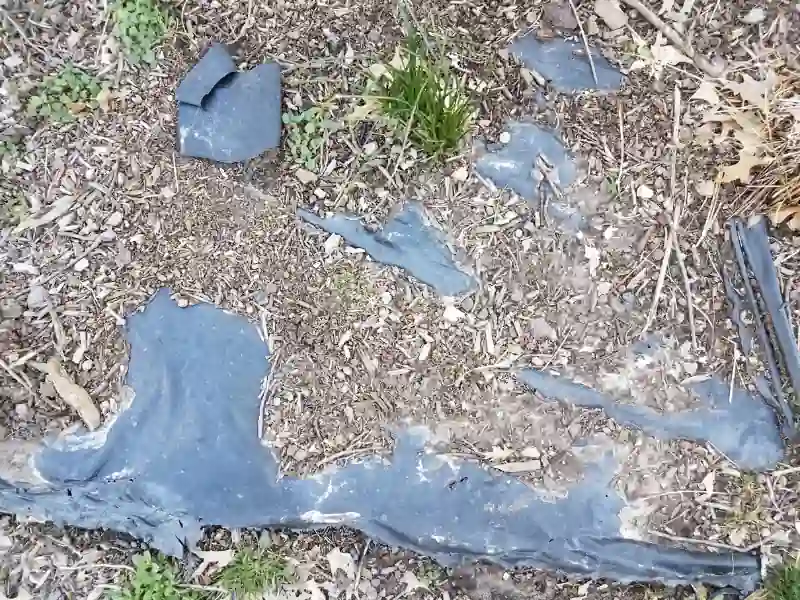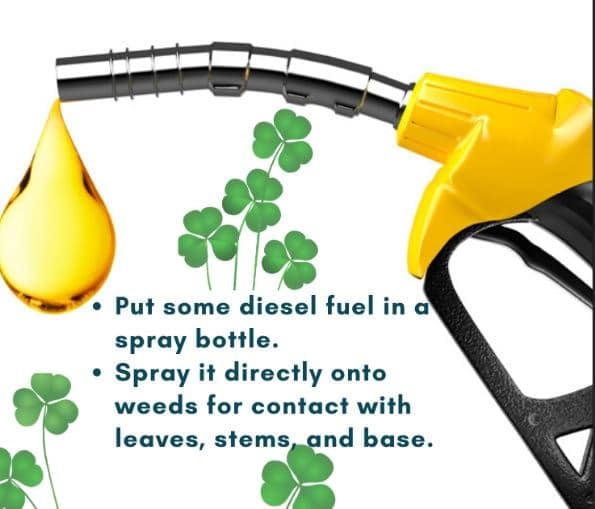3 Things You Can Put Under Mulch to Stop Weeds
Although mulch can stop weeds from growing in your garden, invasive weeds such as dandelions can break through. However, you can add a protective cover on soil before mulching to stop weeds from growing.
Landscape fabric, old newspaper or cardboard covered with leaves, and woven clothes are excellent materials to place under your mulch to prevent weeds from growing. These materials stop weeds by forming a barrier that blocks sunlight from reaching the them.

Do you need to pull weeds before mulching?
Pull out weeds before mulching to provide maximum growing conditions for your plants or trees. Mulching can kill small weeds by smothering them.
However, established weeds will grow and break through the mulch, often needing pulling. The strong weeds absorb your plants’ water and nutrients, deterring their growth.
Here’s how to remove weeds before mulching:
Hand pulling
Hand pulling is an ideal method for removing established weeds and their roots, preventing them from regrowing. Hold the weed by its base, near the soil surface and pull it to remove it from your garden bed.
Digging them up with a hoe
Handpulling doesn’t work for young weeds since their roots can remain in the soil. In that case, dig the soil around the small weeds using a hoe to remove them. Be careful around other trees, as reckless digging can destroy the roots of nearby plants.
Applying a herbicide
Systemic contact herbicides work perfectly as the weeds’ leaves and roots absorb and transport them throughout their bodies. They kill the roots, thus ideal for perennial and annual weeds.
However, non-selective systemic herbicides such as Roundup can harm nearby plants if the chemical accidentally falls on them. Cover them with newspaper to protect them.
Target only the weeds and spray the weedkillers on their leaves. Depending on the herbicide, the weeds will dry a few hours after application and die within hours or days. After two weeks, your garden bed will be ready for mulching.
Organic tip: I recommend organic alternatives to Roundup such as vinegar, Burnout, and Diquat for a healthy garden.
Till the soil
Tilling is ideal for new gardens with no other plants, as the rototiller can damage their roots. Furthermore, tilling breaks compact soil, improving aeration and passage of water and nutrients to the roots.
Use a rototiller to till a naked garden to about six inches to remove weeds before adding mulch.
What to put under mulch to prevent weeds
Here are ideas on what to put under mulch to prevent weeds from growing:
1. Landscape fabric

A landscape fabric material forms a barrier that blocks light from reaching the weeds. Meanwhile, oxygen and nutrients can pass through to your plant’s roots.
If you have plants around your garden, poke holes in the fabric at the exact points where their stems are to expose them.
Before laying the fabric, remove rocks, debris, and old mulch from the garden. Afterward, spread the fabric over the garden and secure the edges with landscape staples. Add a 2-4 inches mulch layer.
2. Inorganic mulches
Inorganic mulches such as woven and fabric cloth also prevent weeds from growing through mulch. They function similarly to landscape fabric. They allow water, oxygen, and nutrients to pass through your plants’ roots while preventing weeds from penetrating them.
Additionally, inorganic mulches block sunlight from reaching the weeds underneath.
3. Old newspapers or light cardboard
Skip Ritcher, a horticultural agent at Texas A&M AgriLife Extension services, recommends adding old newspapers or cardboard below mulch to stop weeds from growing.
Cardboard and old newspapers are biodegradable. Ritcher advises placing 4-6 sheets of newspaper on the soil surface before adding mulch to prevent perennial and germinating young weeds from growing.
He says the newspaper acts as a barrier or boundary between the mulch and soil, thus blocking sunlight from reaching the weeds.
Old newspapers can block weeds from breaking through the mulch in about four months. Replace them.
Wet the newspapers before laying them down to prevent wind from blowing them away. A weed may penetrate the newspaper if it has a hole in it. When such happens, pull back mulch at that section, remove the weed and replace the newspaper with a new one. Add the mulch again.
I recommend using large cardboards covered with leaves over a large garden to create a long-term weed blocker.
How to stop weeds from growing THROUGH mulch
Prevent weeds from growing through the mulch by often doing the following tasks.
- Add 4-6 sheets of newspaper or large cardboard covered with leaves on the soil surface and cover with mulch. The newspaper forms a barrier that blocks sunlight from reaching the weeds underneath.
- Often pull stubborn perennial and annual weeds that break through the mulch. Pull them by their roots, so they don’t regrow. Add more fabric, newspaper, and mulch to the exposed surface to block weeds.
- Add fabric or woven weed barriers that allow oxygen, water and nutrients to pass to the roots of your plants but block sunlight from reaching the weeds underneath.
- Rake the weeds using a hoe or trowel to remove their roots and smoothen the area afterward.
How mulch works
Mulch serves many purposes. According to Aaron Steil, a Consumer Horticulture Extension Specialist at Iowa State University, a good mulch layer should be about 2-4 inches thick.
There are two types of mulch:
- Organic – Mulch made from byproducts of plants and other organic substances. Examples of organic mulch include sawdust, grass clippings, bark, wood chips, leaves, straw, coco bean shells, newspaper or cardboard, pine needle, compost, and leaf mold.
- Inorganic mulch– These are non-organic substances added to the soil surface to serve as mulch. Examples of inorganic mulch include rubber chips, caramel rock, pea gravel, crushed brick, lava rock, woven landscape fabric, and limestone gravel.
Mulch has the following benefits.
- Controls weeds- A thick mulch layer can kill weeds by smothering them. The mulch blocks sunlight from reaching the weeds. However, mulching is effective on young weeds.
- Retains soil moisture– Mulch prevents excessive soil water evaporation into the atmosphere.
- Controls soil erosion– A mulch layer covers the top loose soil, preventing wind, water, and animal traffic from carrying them away.
- Conserves soil temperature– Mulch prevents direct heating and retains the warmth within the soil.
Conclusion
While mulching can control weeds in gardens, some invasive weeds can grow through the mulch. These weeds compete with your plants for water and nutrients, leading to unhealthy plant growth.
To stop weeds from growing through the mulch, add a landscape fabric, woven cloth or newspapers on the soil surface to act as a barrier that prevents them from penetrating. If any weeds appear, hand pull them frequently or remove their roots using a trowel.
When well placed and maintained, weed barriers under mulch provide a strong remedy against the stubborn weeds that break through the mulch.
References
- Michigan State University: Smart gardeners improve their soil and weed control with organic mulch.
- PennState Extension: Mulches for Weed Control in Home Fruit Plantings.


![How to Get Rid of Weeds in Mulch Beds [+ Stop Them]](https://gardenine.com/wp-content/uploads/2021/02/Weeds-in-Mulch-Beds-control-and-killing-weeds-in-mulch-beds.jpg)
![How to Get Rid of Creeping Charlie with Borax [Picture Results]](https://gardenine.com/wp-content/uploads/2020/05/How-to-Kill-Creeping-Charlie-using-Borax.jpg)


